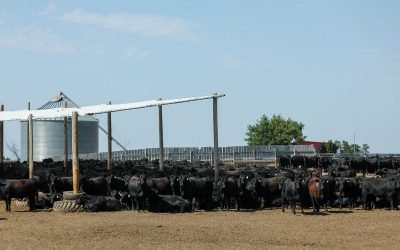
Social Society
December 15,2011
Social media has become an increasingly popular platform for information sharing. People are tweeting, posting, uploading, checking in, and sharing information 24 hours a day. In fact, by reading this post you are among the two-thirds of online adults using social media in 2011.
Social media presence is also growing within the agricultural community. A couple years ago, I became involved in what many today term “agvocacy” – telling the story of agriculture through personal experience. Through my experiences, I have been amazed at the vast and expanding networks of agriculturalists involved in social networking.
As a graduate student in agricultural communications, I thought it would be interesting to study exactly how social media is used and perceived by beef producers in the U.S. With the support of Certified Angus Beef and Drovers/CattleNetwork, this research became a reality. Using a random sample of 500 U.S. beef producers, we studied producers’ preferred sources of information, current use and perceptions of social media, and how personal and professional characteristics affect those preferences.
Here is an overview of the results …
- Beef producers by and large prefer livestock publications as their primary source information, but the Internet is growing in popularity.
- Although just more than half of producers surveyed indicated using social media, it was still the least preferred and least trusted source of information.
- Those who do use social media feel more connected to other beef producers and industry organizations, such as Certified Angus Beef, through social networking.
- Although both users and non-users indicated they generally feel information shared via social media is credible, they rated social media as less credible than other sources.
- Women tend to use social media more than men, but men more commonly use the tools for reasons related to the agriculture or beef industry.
- Social media use is more prevalent among larger beef producers and those with a higher level of education.
- Very few producers indicated that they feel social media is unimportant.
Considering the aging population of agricultural producers across the U.S., these results do not come as a surprise. Over years and years of research, publications have remained the staple source of information for producers. However, this study did indicate a growing prevalence of Internet use among U.S beef producers.
Although we know that many producers who are using social media do so for purposes related to the beef or agricultural industry, it is unknown what specific information is being accessed. Is it also unknown how producers decide which social media tools to use. Looking further into these issues would help agricultural communicators and beef industry organizations better meet producer needs in distributing information.
Producers who are not active in social networking say that time is the biggest preventative factor. A large learning curve is often inherent to communication technologies, which can prevent some individuals from becoming involved. However, if producers are willing to learn how to use these technologies, they can prove to be invaluable tools.
The relevance of farmer and rancher involvement in social media is two-fold. First, it can serve as a quick and convenient tool for accessing information on the go. Whether a producer is checking cows, cutting hay, or fertilizing, they can have industry information at their fingertips.
Social media is also an avenue of interaction between the farming and non-farming communities. Temple Grandin, animal behavior specialist and a 2010 National Cattlemen’s Beef Association Lifetime Achievement Award winner, says that social media gives agriculturalists the opportunity to be the story tellers rather than the topic of discussion among the 98% of the population not involved in production agriculture. Essentially, lack of involvement equates to lost opportunity.
I believe the benefits of social media as they relate to the agricultural industry have not yet been fully realized. The opportunities are endless. What do you think? As a beef producer, in what ways do you use social media to either gain or share industry information. We’d love to hear your feedback on how the Black Ink team can better serve you through social networking on the blog, Facebook, and Twitter.
You might also like
Certified Angus Beef Recognizes Beef Quality Research
First-place honors go to Andres Mendizabal, an international student pursuing a Ph.D. in animal science at Texas Tech University. His research is titled, “The Accuracy of USDA Yield Grade and Beef Carcass Components as Predictors of Red Meat Yield.”
Not all good days are sunny and warm
Stress of any kind affects performance and health, but also well-being and behavior, a special focus for CSU animal scientist Lily Edwards-Callaway. Her team’s literature review found shade benefits vary by location, structure type and the weather.
Progress from small steps
Every day is a chance to learn and get better. Thousands of others like my new friends in Alabama are taking steps to meet the shifts in consumer demand, and to know more. Small steps in the right direction can start now. Even if it’s just recording a snapshot of where you are today, a benchmark for tomorrow.



